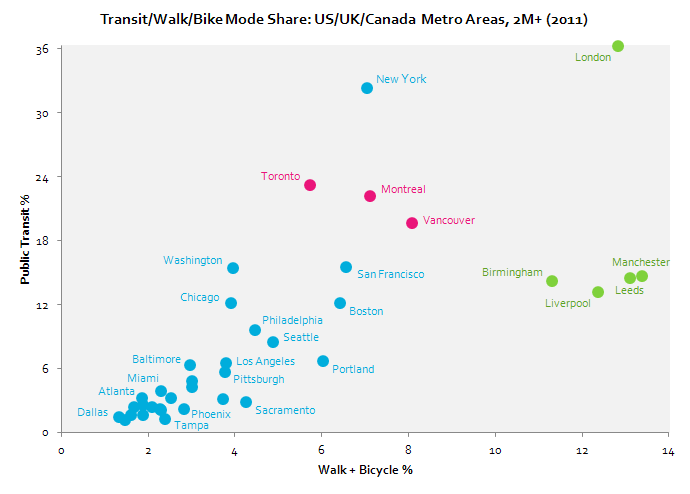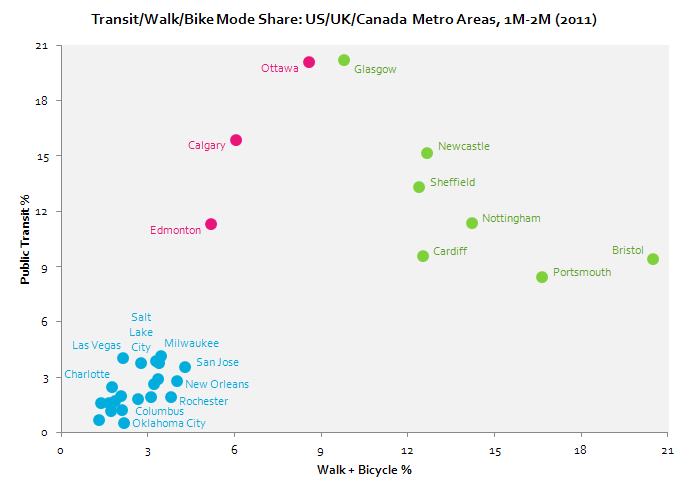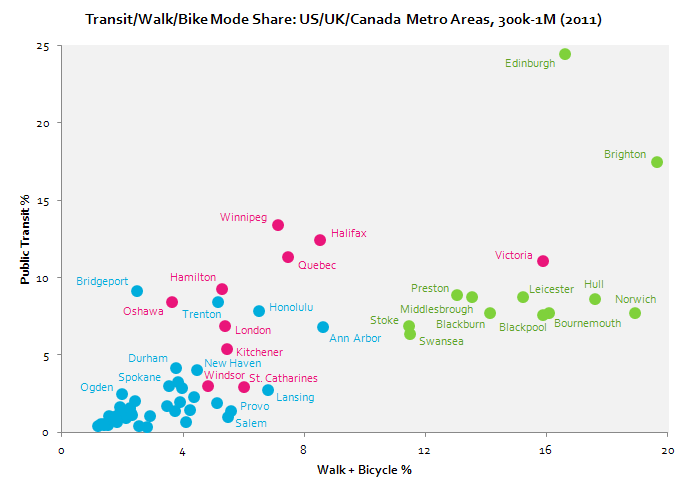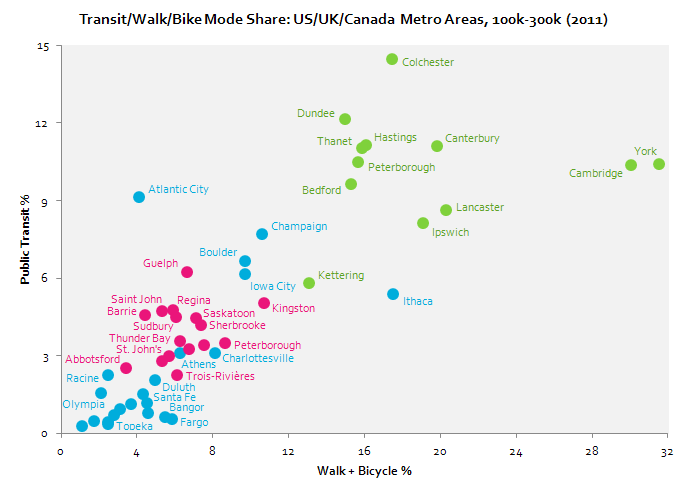I have made thread about commute mode share in US, Canadian, UK metropolitan areas, maybe worth to post the graphs again:




You can see Canadian metropolitan areas not so different from those in USA but also not so different from the UK. Canada is car-oriented like the US, but it is also transit-oriented like the UK. Look at the UK metropolitan areas with population 1 million to 2 million, there is even some negative correlation between transit ridership and walking/cycling! Look at Quebec City, dominated by freeways, but still better transit ridership than much of UK.
That's why I say to look at car-oriented development and transit-oriented development as conflicting, that going from car to transit as representing a major cultural shift, and so to focus so much on huge expensive projects like freeway removals and subway and light rail lines is a big mistake, and it is the most common mistake made by US cities. Look at Dallas, largest light rail system in the US, but worst ridership in Texas, worse than Seattle which relies mostly on buses. See Las Vegas, another bus-based system, and also a pure post-war and car-oriented urban area, but one of the transit leaders in the USA.
To be a leader in transit doesn't actually take much effort at all. Car culture dominates Canada as much as USA. Car culture dominates Las Vegas as much as Oklahoma City, but you wouldn't know it looking at the transit ridership statistics. Because transit culture is part of car culture too. When cities start seeing the overlap between cars and transit, the small step that transit represents, then they can also start recognizing the small steps required to make transit successful. It's only when cities start seeing cars and transit as separate cultures that their transit systems start to fail.
Look at those UK metropolitan areas above 2 million people, Manchester, Leeds, Liverpool, Birmingham: all are much less car-oriented than Toronto, but all also much less transit-oriented than Toronto.



